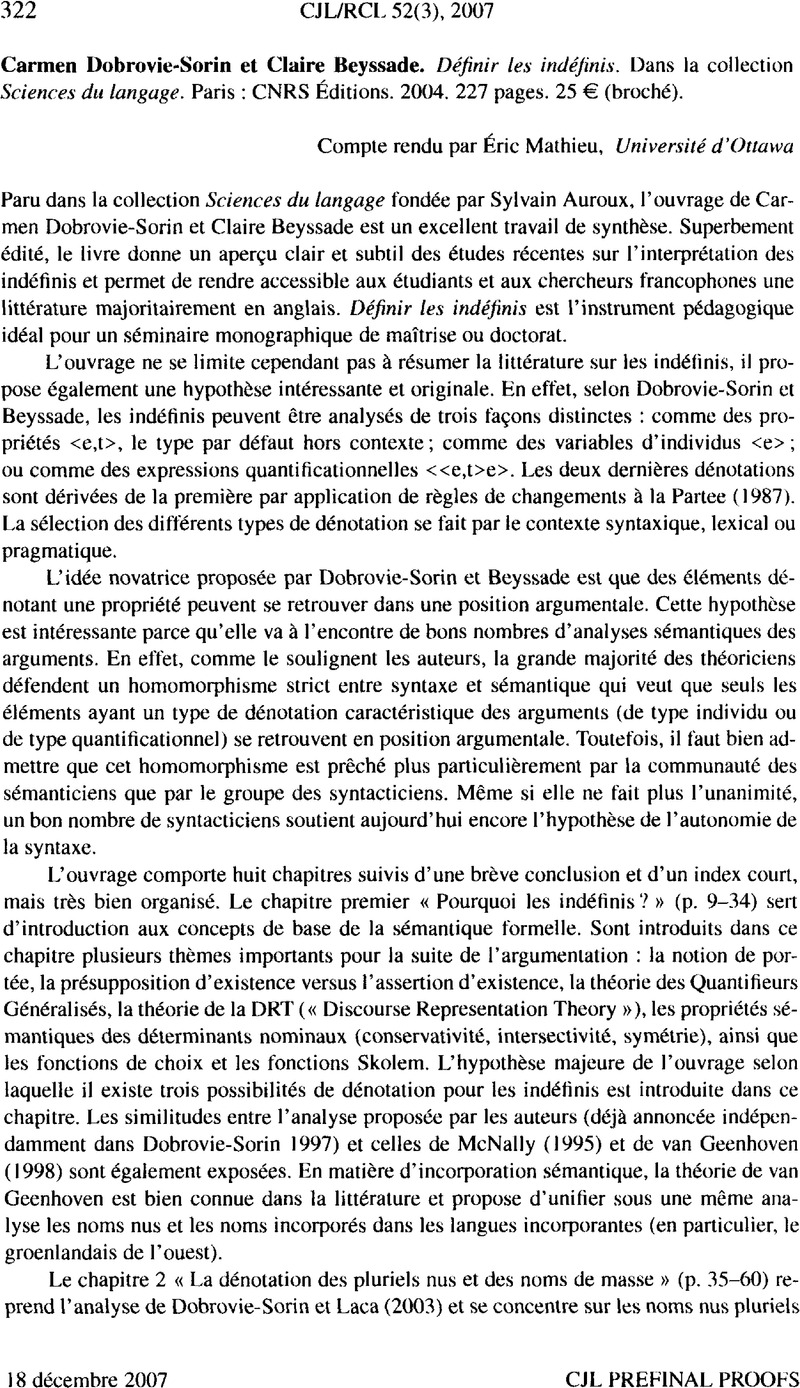Crossref Citations
This article has been cited by the following publications. This list is generated based on data provided by Crossref.
Russo, Michela
2022.
Indefiniteness in Francoprovençal. A Real Bare de? New Hints from the Consonantal Liaison.
Géolinguistique,
Vol. 22,
Issue. ,



